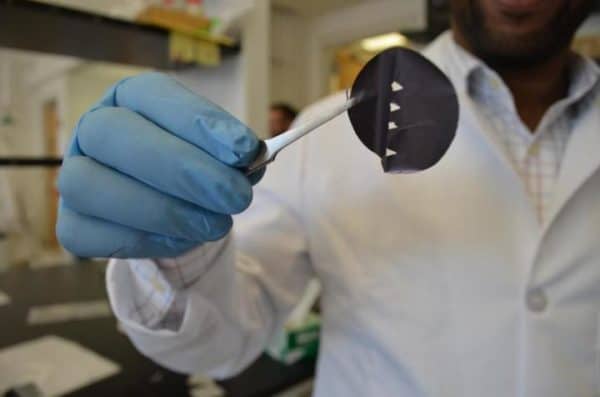
 Engineers at Drexel University in Philadelphia and the Korea Institute of Science & Technology in Seoul, South Korea, have shown that a newly developed ultra-thin material called MXene has the ability to almost completely block electromagnetic waves, a result which is expected to have a dramatic impact on the construction of information and communications technologies.
Engineers at Drexel University in Philadelphia and the Korea Institute of Science & Technology in Seoul, South Korea, have shown that a newly developed ultra-thin material called MXene has the ability to almost completely block electromagnetic waves, a result which is expected to have a dramatic impact on the construction of information and communications technologies.
Electromagnetic interference is becoming an increasing concern as the number of gadgets and appliances carrying electric current continues to multiply. Everything from TVs to cell phones, computers and stereos are susceptible to electromagnetic interference, producing buzzing noises on our devices, blurring monitors and causing slow-downs in processing speeds. Most technologies use conductive metals like copper or aluminum to block out electromagnetic radiation, but these materials can add significant bulk and weight to devices, not to mention cost.
“As technology evolves and electronics become lighter, faster and smaller, their electromagnetic interference increases dramatically,” says Babak Anasori, assistant professor at the A.J. Drexel Nanomaterials Institute and co-author of the new study published in the journal Science. “Therefore, it is of great importance to achieve better protection with thinner films.”
Enter MXenes, a new group of “2D” materials made of metal carbides or nitrides and measuring only a few atoms thick. MXenes have high electrical conductivity and are able to reflect electromagnetic waves to a high degree while absorbing some and still yet allowing other waves to pass through but with far less energy. What’s more, they are easy to apply via a spray coating onto any surface.
Researchers studying the properties of a thin titanium carbide MXenes that ranged in thickness from a couple of micrometers (one-thousandth of a millimeter) to 45 micrometers found that at the thinnest end of the spectrum, the MXene was able to block out radiation at a level similar to that of copper and aluminum but that when measured at an eight micrometer thickness, the MXene was blocking 99.9999 per cent of radiation over a frequency range running from cell phones to radar.
The difference is huge. To block radiation to this level would require currently-used carbon-polymer materials to be about one millimeter thick -a significant addition to devices such as cell phones which are seven to ten millimeters themselves.
“To have all these electronic components working without interfering with each other, we need shields that are thin, light and easy to apply to devices of different shapes and sizes,” says Yury Gogotsi, Director of the A.J. Nanomaterials Institute and co-author of the study. “We believe MXenes are going to be the next generation of shielding materials for portable, flexible and wearable electronics.”
MXenes have the potential for a wide range of applications in the development of lithium-ion batteries, supercapacitors and composite films. Last year, researchers at the University of Waterloo in Waterloo, Ontario, experimenting with early-transition-metal carbide MXenes found that their high metallic conductivity makes them excellent candidates to serve as electrodes in lithium-sulfur batteries, a type of rechargeable battery predicted to replace lithium-ion cells as the premier energy storage option of the future.
Comment
One thought on “Spray-on material,MXene, blocks 99.99% of electromagnetic pollution, scientists say”
Leave a Reply
You must be logged in to post a comment.



 Share
Share Tweet
Tweet Share
Share




Wow,liquid tinfoil.Good for de head man.Sarc.